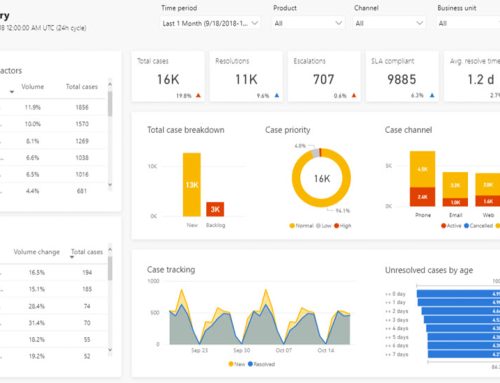What is a balanced Scorecard?
The Balanced Scorecard is basically a strategic planning and reporting technique, that captures the objectives of an organization and divides them between four perspectives that hold equal significance. These include financial, customer, operational, and people perspective. In order to provide a clear course of implementation the organizational objectives cascade down those four perspectives.
In the financial perspective, typical scorecard measures may consist of sales performance, cash flow, return on equity etc. For customer perspective the typical metrics include delivery time, measures of price, call time for support, warranty period and so on. When it comes to operational perspective it generally includes unit costs, number of defects in a process, cycle times, sales penetration and the like. In terms of people perspective, we can usually observe standard measures like employee engagement scores, cost leadership, skill increases of staff, and retention rates of high performing employees.
Developing the Scorecard
In order to develop a balanced scorecard an organization need to take some steps for its effective implementation.
Balanced Scorecard Steps
- Step one is about Organizational Assessment. This step of the scorecard building process considers various factors such as to decide the plan for balanced scorecard. This will specify each team among others that will participate in developing the scorecard. This step also covers performing an assessment of the organization regarding strategic essentials such as the vision, mission, SWOT as well as organization values.
- The second step is about strategy which involves the identification of elements such as strategic themes, perspectives, and strategic results designed to address customer needs along with their value proposition. In this context, the key factor of this step is to make sure that the organization has clearly established the requirements of its customers in terms of image, function and relationship.
- The third step includes determining the objectives of the particular organization, for instance the continuous improvement activities of the entity which should relate with the strategic goals.
- After that, the fourth step is about strategy maps. It should be kept in mind that the objectives planned in the third step are related in cause-effect associations to generate a strategy map for all strategic themes. Later on, the theme strategy maps are combined into a complete corporate strategy map demonstrating by what means value is delivered for the customers as well as stakeholders of the organization.
- Furthermore, the fifth step includes developing performance measures for the strategic objective.
- In Step Six, we develop the strategic initiatives that will provide support to the strategic objectives. At this point, those ventures that have to be started for ensuring organizational success are planned and allocated.
- The seventh step involves cascading the business scorecard down through every level of the organisation. This is followed by the individual and team scorecards designed to connect everyday work with the corporate vision and departmental objectives. For all objectives performance measures are designed at every level. Accountability follows the objectives and measures as ownership is clearly defined at each level.
- The last and eighth step is about evaluating the success of selected business strategies. At this point the key question that needs to be answered is, have we accomplished the expected results?






